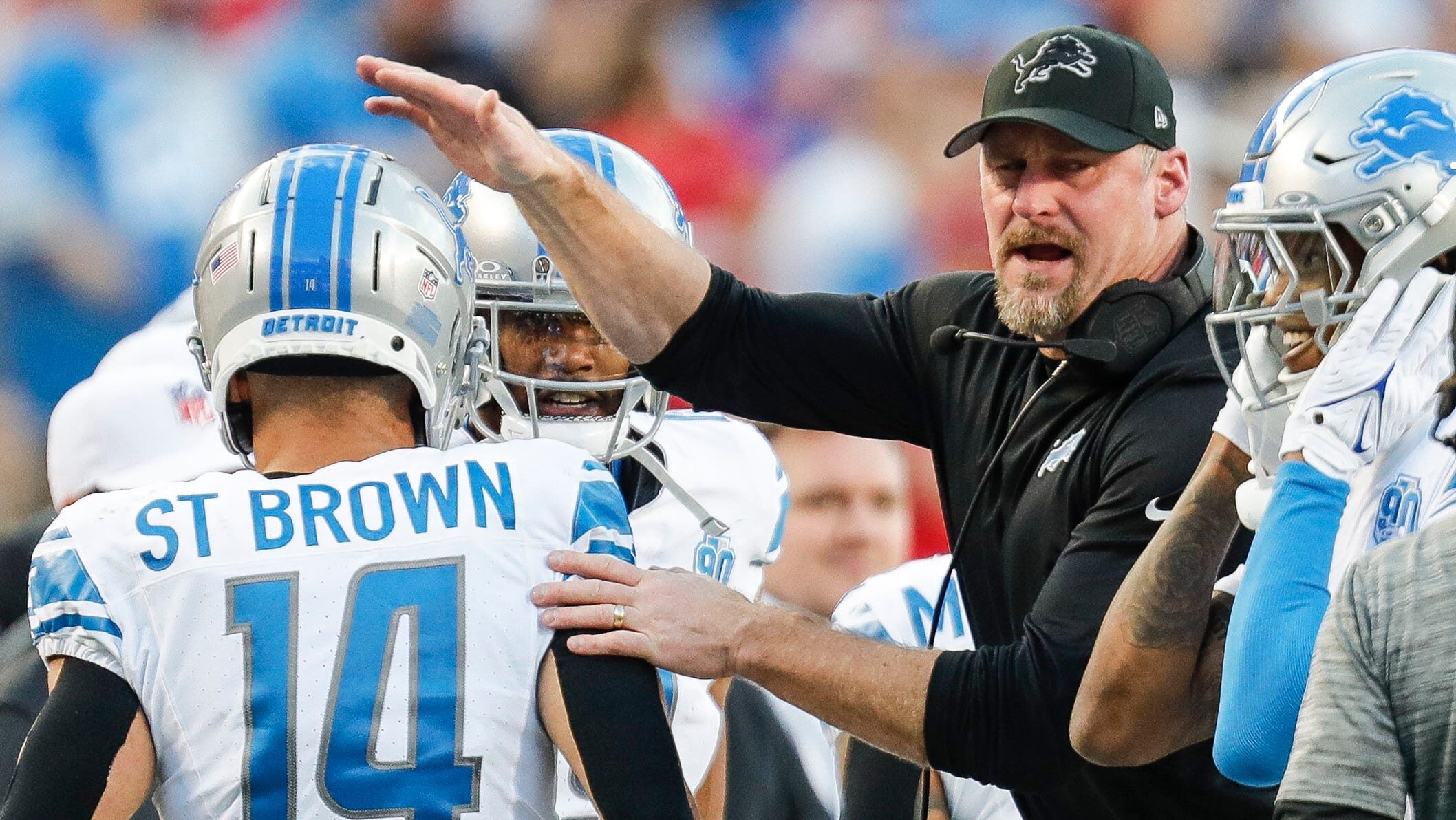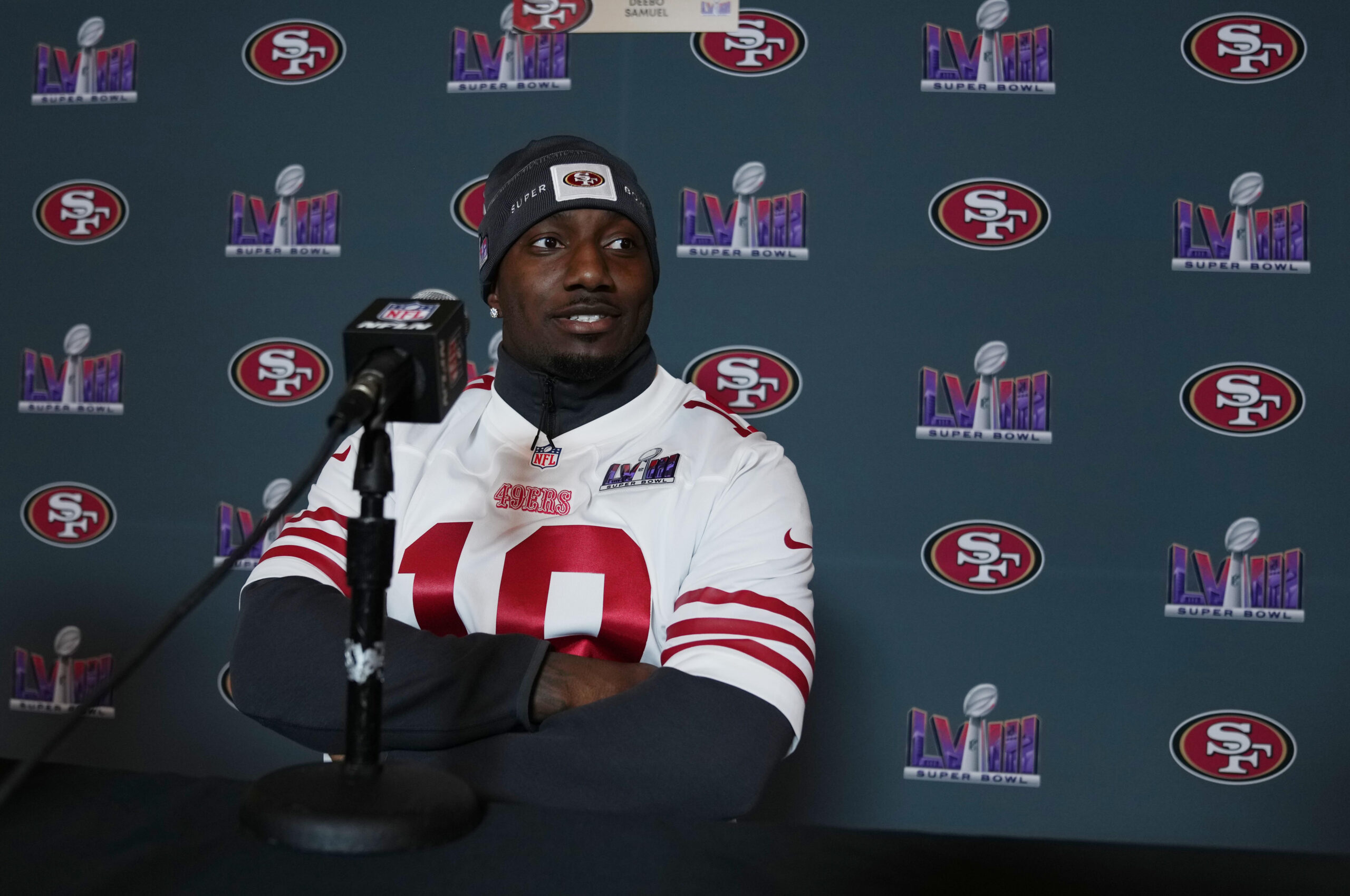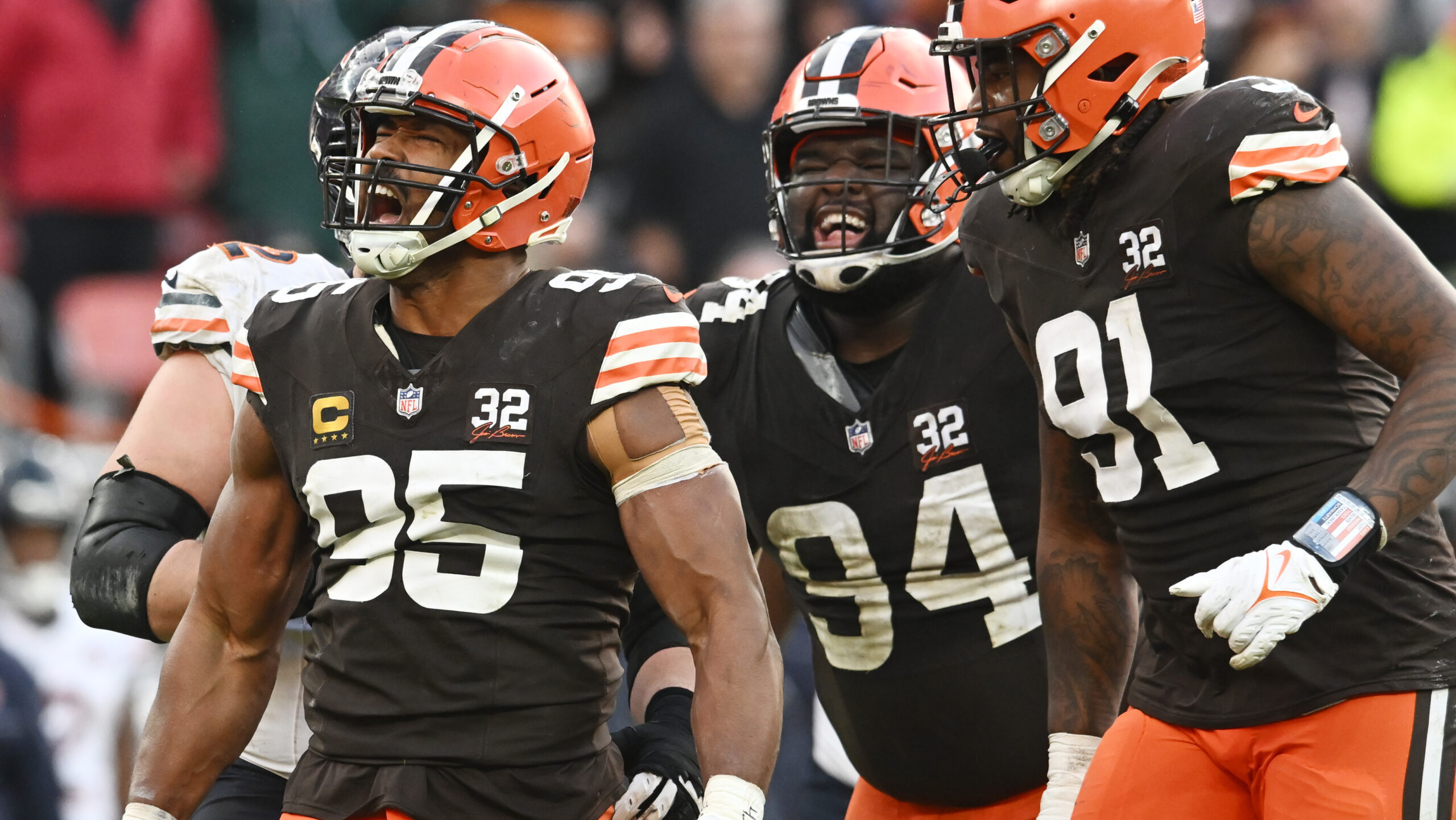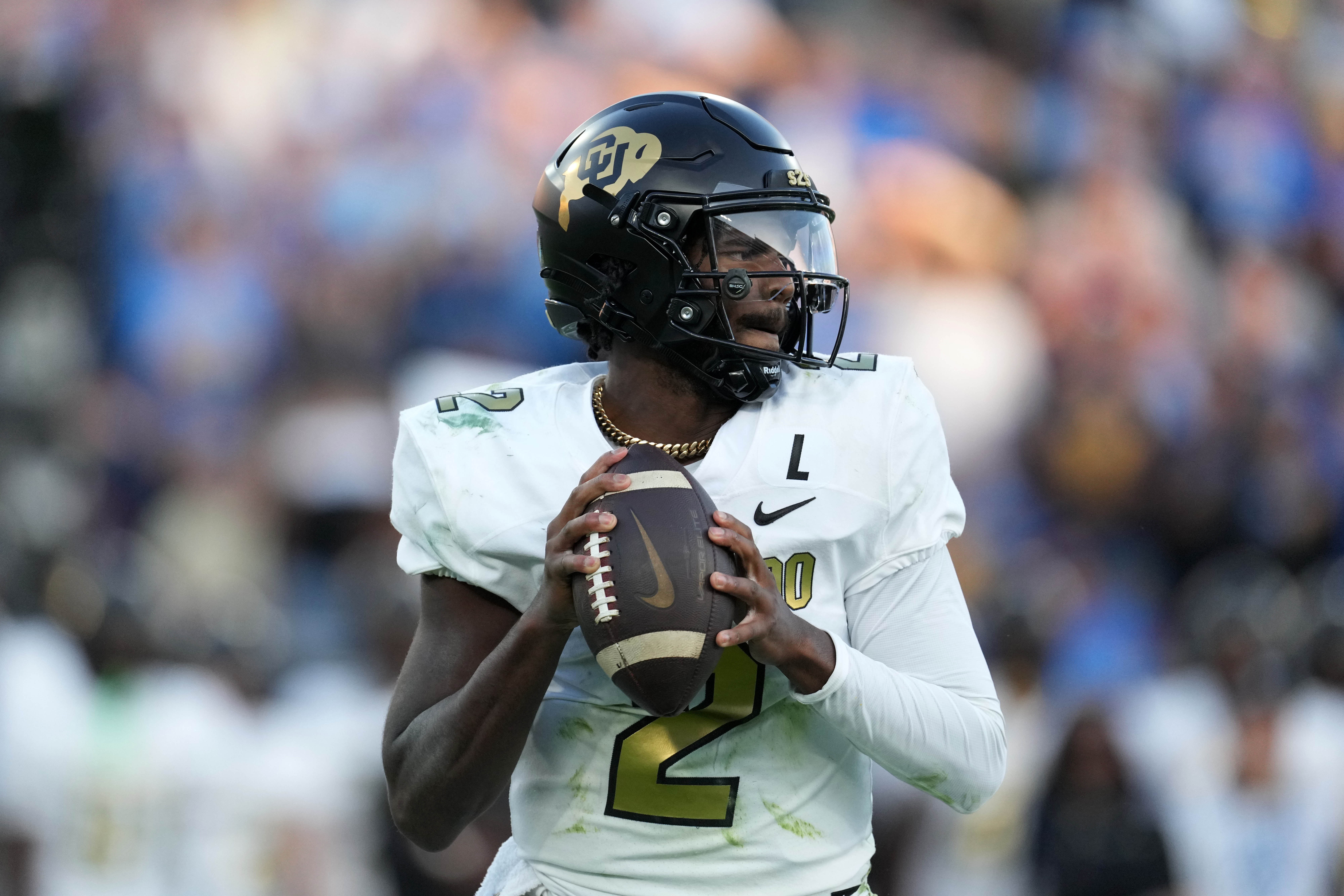NFL Analysis
1/9/24
6 min read
What's Wrong With the Miami Dolphins?
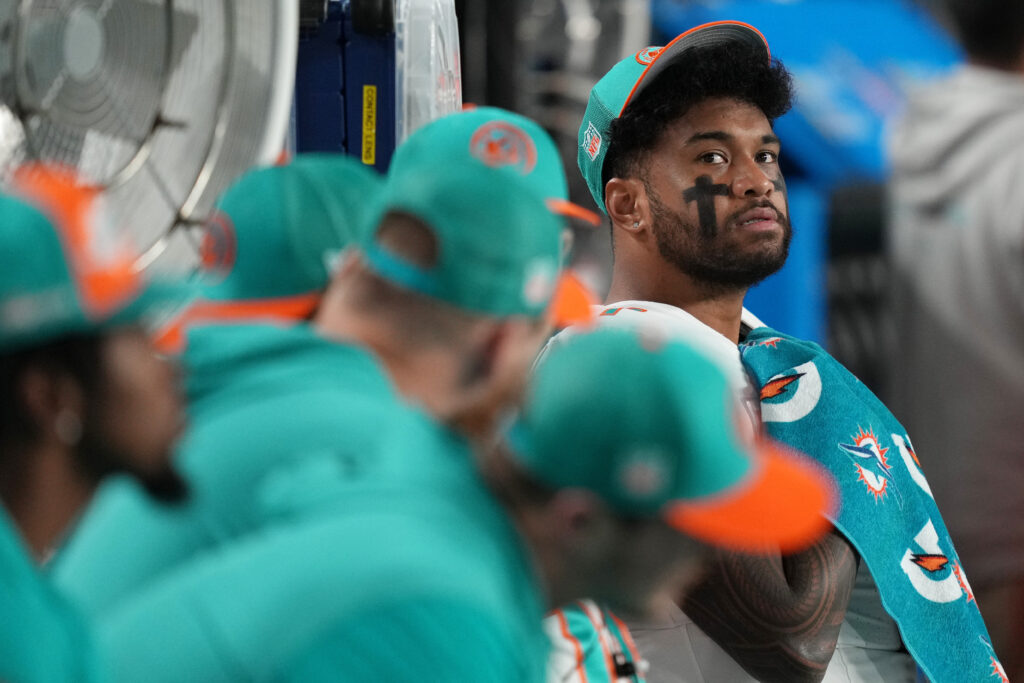
After a Week 13 win over the Washington Commanders, the Miami Dolphins were 9-3 with a path to the No. 1 seed in the AFC. Miami followed that up with a 2-3 stretch, lost the AFC East to the Buffalo Bills and will travel to Kansas City as the No. 6 seed during the wild-card round.
The pressure is on — literally.
Over the past two seasons, the Dolphins’ offense has been meticulously designed so that everything works together. It’s the Swiss watch of NFL offenses. The league’s fastest group of receivers can get downfield quickly so that the quarterback with one of the quietest releases in the league can push the ball farther at a faster rate than we see from any other offense.
One aspect of the timing and design of this offense that isn’t talked about enough is how it covers up issues along the offensive line. That might be one of the team’s biggest benefits. The Dolphins have improved up front but still don’t have the strongest collective group of pass protectors.
While the offensive line graded out well in some metrics, Miami's style of play heavily influences that.
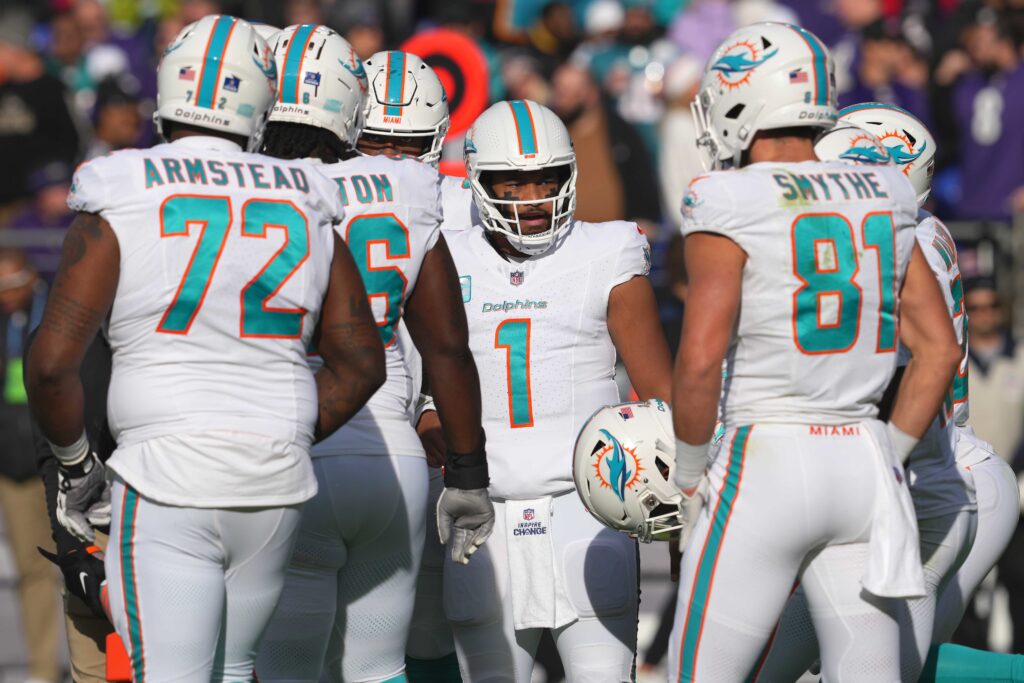
Dolphins Rely on Quick Pass Plays
For a clearer picture, take a look at ESPN’s pass block win rate. By that measure, the Dolphins rank 31st. This gives a better idea of how Miami’s line holds up because this metric is based on wins and losses within 2.5 seconds of the snap.
Offensive linemen are credited with a win if they hold a block for 2.5 seconds and a loss if they get beat before then. (There’s no win or loss given if the ball is out before 2.5 seconds.) The knock on Miami’s line comes when it must sustain blocks longer than that threshold.
That idea is what the Dolphins’ offense is based around.
Miami rarely asks the offensive line to hold up for an extended time in pass protection. With the ball out so quickly — 66.4 percent of Tua Tagovailoa’s passes were out within 2.5 seconds this season, per TruMedia — the threat of pressure also comes off the table. Tagovailoa has been the least-pressured quarterback in the NFL this season, at just under 25 percent of his dropbacks.
Offensive Line's Continuity Is One Issue
That changed over the past few weeks because the offensive line experienced injuries and lineup fluctuation.
LT Terron Armstead has been in and out of the lineup due to back and foot injuries and most recently missed the Week 14 game against Tennessee. RG Robert Hunt missed two games midseason because of a hamstring injury and then returned … only to be out Weeks 14-17.
RT Austin Jackson had a three-game stretch listed as questionable and missed Week 16 with an oblique injury. Liam Eichenberg was questionable due to a calf injury in two of the past four weeks — while he switched from guard to center because Connor Williams went on injured reserve after the game against the Titans.
That’s not ideal! It should also be no surprise that Tagovailoa has seen more pressure over the past few weeks than he did over the first stretch of the season.
Few offenses are more affected by pressure than Miami’s, and that’s part of the unit’s design. Because timing is critical to how the offense operates, anything that messes with that timing has a greater chance of derailing the play.

The issue isn’t just that the pressure has ramped up, it’s how the pressure has come.
Pressure Rates Increasing at Crunch Time
It’s a high-variance play to blitz the Dolphins. Defenses can tend to get antsy because it’s so hard to pressure Tagovailoa because the ball gets out so quickly. That usually neutralizes a four-man rush.
A blitz is an attempt to send more blockers than Miami can handle to get a pass rusher to the quarterback before the ball can come out. That doesn’t always work. Unsurprisingly, Tagovailoa has the fastest time to throw against the blitz at just 2.02 seconds after the snap.
Here’s where that flipped: Since Week 14, opponents blitzed Tagovailoa on only 7.5 percent of his dropbacks. He’s the only quarterback with a rate under 10 percent during that span.
Despite that low blitz rate, Tagovailoa has seen some of his highest pressure rates of the season over the past few weeks.
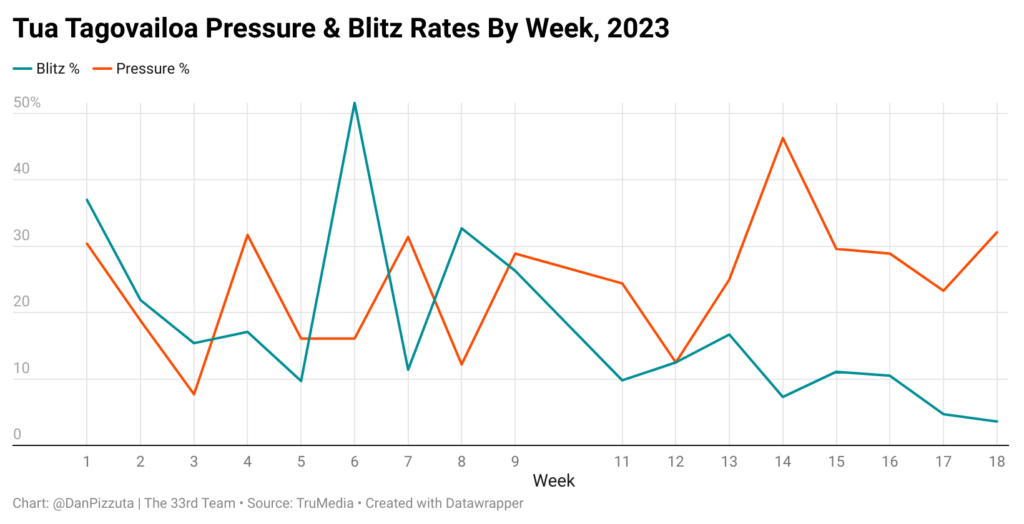
As the pressure got home, it started to speed up Tagovailoa’s process. That might be weird to say for an offense that’s already the fastest in the league by design, but any changes from the intended timing of the play — whether forcing the team to be faster or forcing an extended play — can throw everything off.
When under pressure and forced to extend a play, Tagovailoa has resorted to trying to push the down farther down the field outside the numbers.
When not under pressure, Tagovailoa has an 8.0-yard aDOT and a 51.8 percent success rate on throws outside the numbers. On throws outside the numbers under pressure, Tagovailoa has a 12.9-yard aDOT with a 31.2 percent success rate.
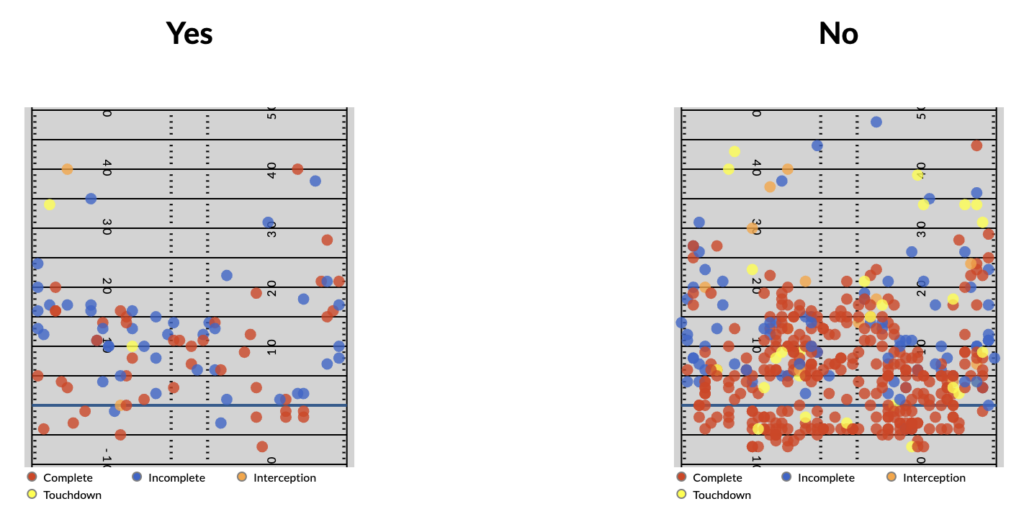
This has been an issue all season as the game wears on. Over the first three quarters, the Miami offense has been one of the best in the league. But in the fourth quarter, especially in games when the Dolphins have been forced to pass in close games, pressure has gotten through and affected the offense.
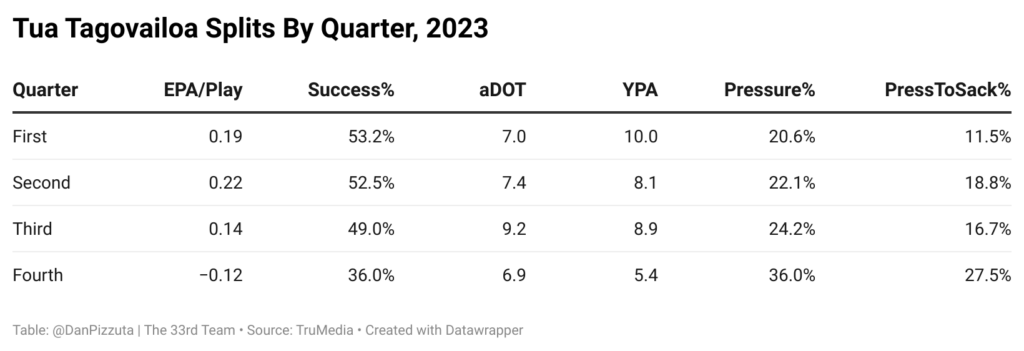
Because so much of the passing offense is based on trust and timing, when the quarterback doesn’t trust the protection to hold up — even for just the 2.5 seconds necessary — it has a far-reaching, negative effect.
Healthier Line Faces Stiff Test in Chiefs
Miami’s most common offensive line combination has played on just 19.8 percent of the offensive snaps this season. That line last played together in Week 5.
Tagovailoa has dropped back at least 15 times behind 13 different offensive line combinations this season, per TruMedia. There’s only so much that can be done to cover up that lack of continuity.
This weekend, the Dolphins will be as healthy as they could hope given the circumstances — three of their top linemen will start in their expected spots. Things won’t get easier, though.
Miami will face a Kansas City defense that has Chris Jones up the middle and plays an aggressive pass rush under Steve Spagnuolo. When these teams met in the regular season, Tagovailoa averaged -0.32 EPA per play. He faced pressure on 28.9 percent of his dropbacks and had an 8.1 percent sack rate.
Miami’s offense isn’t broken overall, but the broken pieces up front made things harder over the final weeks of the regular season. The Dolphins can still create explosive plays like this, but the key will be to avoid the negatives and, of course, handle the pressure.


